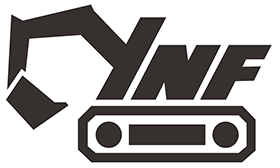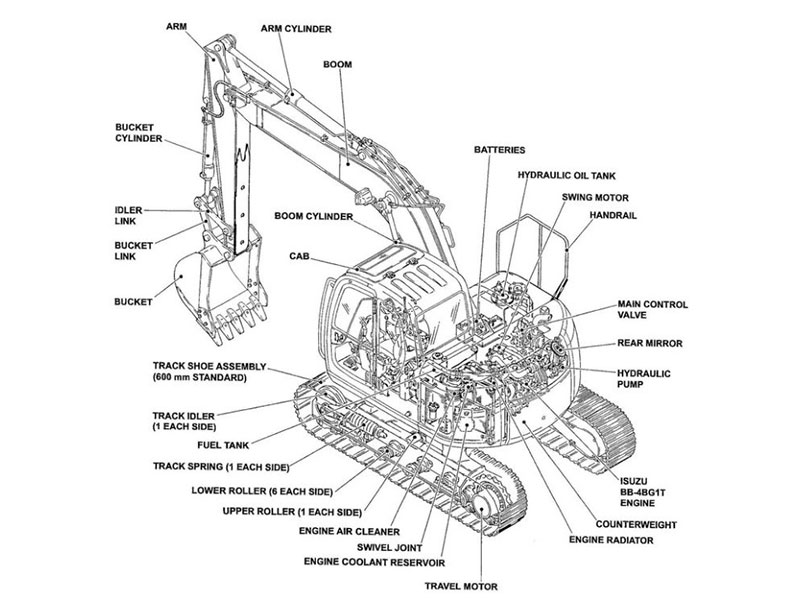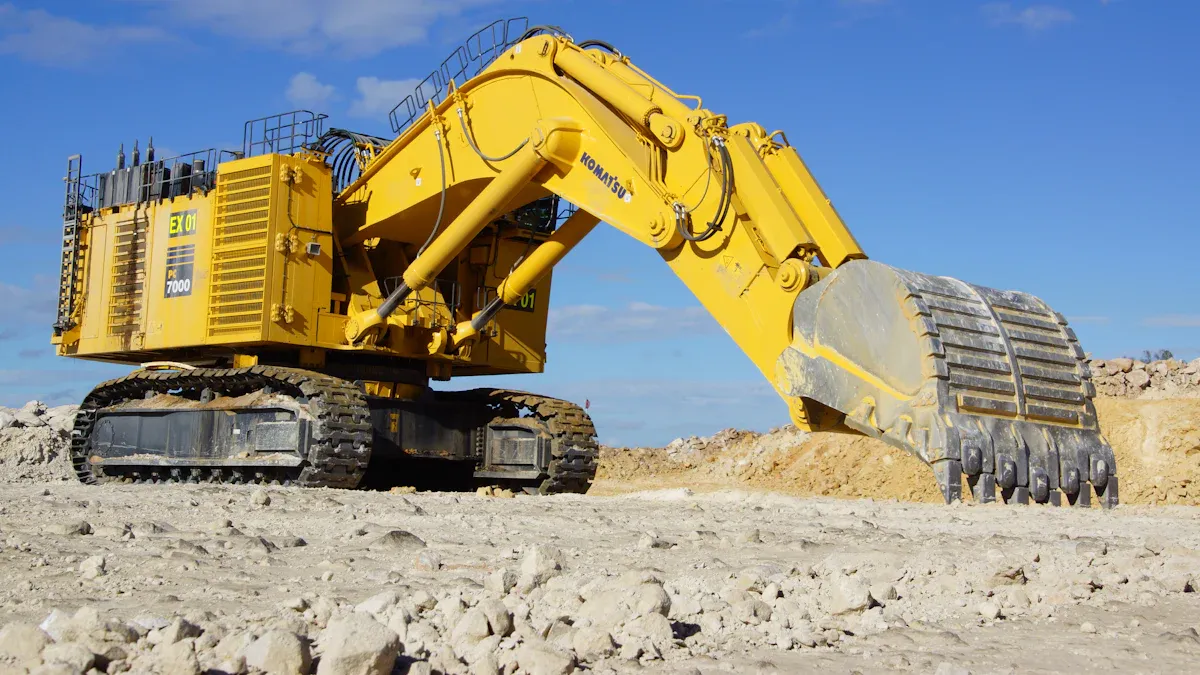
Excavator final drive parts are the hydraulic motor, planetary gear set, gearbox, bearings, seals, shaft, sprocket, and housing. Each part has a special job in the final drive assembly:
The hydraulic motor gives power for movement.
The planetary gear set helps control torque and speed.
The gearbox helps slow down the speed.
Bearings and seals keep moving parts safe.
The shaft and sprocket send power to the tracks.
The housing covers and protects all inside parts.
Knowing these main parts of a construction equipment final drive helps operators spot problems early. It also helps them do maintenance on time and pick the right excavator parts for different machines. Taking care of heavy equipment and its final drive parts helps stop breakdowns, saves money, and makes the equipment last longer.
Key Takeaways
The excavator final drive has important parts. These include the hydraulic motor, planetary gear set, gearbox, bearings, seals, shaft, sprocket, and housing. Each part has a special job to help move the tracks.
The hydraulic motor changes hydraulic fluid into spinning power. The planetary gear set and gearbox slow down this power. They also make it stronger. This helps the excavator move smoothly and with more force.
Bearings and seals protect the moving parts. They lower friction and stop dirt and oil leaks. This helps the final drive last longer and work better.
You should check and take care of the final drive often. Check oil levels, clean off dirt, and fix leaks early. Doing this stops breakdowns and saves money on repairs.
All final drive parts need to work well together. If you find problems early and fix them, the excavator stays strong and safe. It will be ready for hard jobs.
Hydraulic Motor
Function
The hydraulic motor is a very important part of the excavator final drive system. It gets pressurized hydraulic fluid from the main pump. The motor changes this fluid power into spinning mechanical energy. This spinning force moves the gear system. The gears increase torque and help the excavator lift heavy things easily. Most excavators use a travel motor. This is a special hydraulic motor made for final drive jobs. Travel motors have both a hydraulic motor and a gearbox. They are good at turning hydraulic power into the energy needed to move the tracks. Some excavators use other types like axial piston motors, radial piston motors, or vane motors. But travel motors are the most common.
Tip: Check the hydraulic motor and its parts often. This helps stop surprise breakdowns and makes the final drive last longer.
Role in Final Drive System
The hydraulic motor is the first step in sending power through the final drive system. When the operator uses the controls, the motor gets high-pressure fluid. This fluid power turns into spinning motion. The spinning motion goes through the planetary gear set and gearbox. This lets the excavator send the right torque and speed to the tracks. The final drive motor must work with high pressure and tough jobs. This is true in places like mining or demolition. If you take care of it, a hydraulic motor can last 5,000 to 7,000 hours. How long it lasts depends on maintenance, operator skill, and the quality of hydraulic fluid. Problems like dirty fluid, blocked case drain filters, and bad seals often cause hydraulic motor failure. These problems can hurt the inside parts and make the final drive work less well. Doing regular maintenance, like checking fluid and looking at filters, keeps the hydraulic motor and other parts working well.
Planetary Gear Set
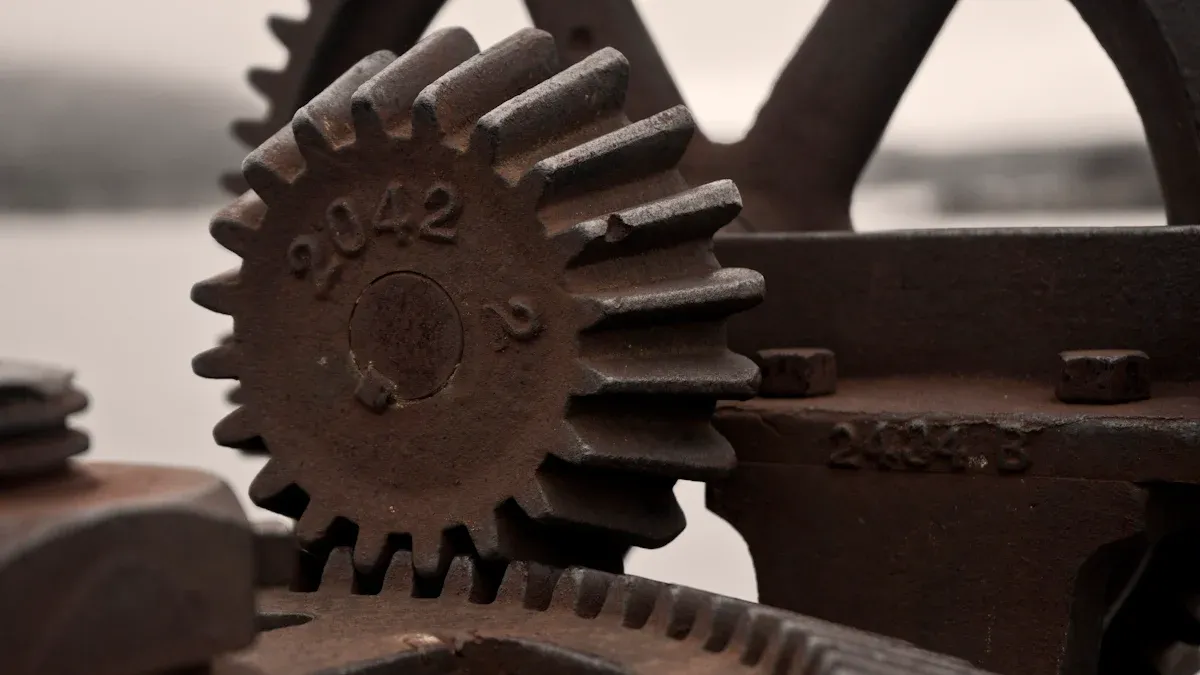
Torque and Speed
The planetary gear set is a very important part of the excavator final drive. This gear system takes fast spinning from the hydraulic motor and changes it into strong turning force for the tracks. The planetary gear set has three main parts: the sun gear, planet gears, and ring gear. The sun gear gets power first. The planet gears go around the sun gear and touch both the sun and ring gear. When the sun gear spins, the planet gears turn and move around it. This action makes the torque stronger and the speed slower.
Excavators need this extra torque to carry heavy loads and move over rough ground. The planetary gear set helps the final drive give steady, strong power to the tracks. Many planet gears share the work, so the system is strong and lasts longer. This design lets the excavator move smoothly, even with a lot of weight. Operators can count on the planetary gear set to give the right mix of speed and force for every job.
Gear Reduction
Gear reduction is a main job of the planetary gear set in every excavator. When the sun gear spins fast, the planet gears and ring gear work together to slow down the output speed. This makes a slow, strong force that is good for moving the tracks. Gear reduction also helps protect other parts in the final drive by spreading out the force and lowering wear.
Planetary gear sets work better than other gear systems. The table below shows how planetary gearboxes compare to spur, helical, and worm gearboxes in heavy machines:
Gear System | Efficiency Characteristics | Advantages in Heavy Machinery | Disadvantages |
|---|---|---|---|
Planetary Gearbox | High efficiency because many contact points share the load and lower friction | High torque in a small size, high reduction ratio | More complex and costs more to make |
Spur Gearbox | Lower efficiency with only one contact point, so more friction | Easier and cheaper to make | Bigger size, not as efficient |
Helical Gearbox | Usually high efficiency, sometimes better than planetary gearboxes | Less noise and shaking | Not as small, less torque strength |
Worm Gearbox | Lower efficiency, especially at high reduction ratios (about 65%) | Simple design, good for slow jobs | More friction, not as efficient |
Excavator makers pick planetary gear sets for the final drive because they give strong torque in a small space. This helps the excavator use less energy and saves money. The planetary gear set makes sure the excavator can work hard all day without losing power or speed.
Final Drive Gearbox
Speed Reduction
The final drive gearbox helps control how fast the tracks move. It gets fast spinning from the hydraulic motor. Inside, a planetary gear system slows this spinning down. The sun gear is in the middle. Planet gears and a ring gear surround it. When the hydraulic motor turns the sun gear, the planet gears spin and move around it. This slows the speed before power goes to the tracks.
Operators use the final drive gearbox to keep the excavator safe and steady. Slower speed lets the machine work on rough ground and carry heavy loads. Multi-stage planetary gearboxes can slow the speed even more. This helps with hard jobs like mining or demolition. The gearbox keeps the excavator from moving too fast. This protects the machine and the operator.
Note: If the excavator moves too fast or cannot climb slopes, there may be a problem with the final drive gearbox. Checking it often helps find problems early.
Torque Increase
Torque is the force that helps the excavator push and lift heavy things. The final drive gearbox makes torque stronger with its planetary gear system. When the hydraulic motor sends power to the gearbox, the gears work together to make the force bigger. The carrier holds the planet gears and sends this stronger torque to the output shaft. The output shaft connects to the sprocket and moves the tracks.
The main parts of the final drive gearbox are the hydraulic motor, gear reduction system, output shaft, seals, and bearings. These parts work together to move power well. By making torque stronger, the gearbox helps the excavator work on tough ground and move lots of dirt. Operators see strong, steady movement even when the machine faces hard jobs.
A well-kept final drive gearbox helps the excavator work its best. Signs of wear are grinding sounds, leaking fluid, overheating, and jerky movement. Checking and fixing problems early stops big breakdowns and helps the gearbox last longer.
Signs of Gearbox Wear | What It Means for Excavator |
|---|---|
Grinding noises | Worn gears or bearings |
Fluid leaks | Damaged seals or housing |
Overheating | Internal friction or low fluid |
Jerky movement | Component failure |
Tip: Operators should check oil, listen for strange sounds, and look at seals often. These steps help keep the final drive gearbox and other parts working well.
Bearings and Seals
Support and Protection
Bearings and seals are very important in the excavator final drive system. These parts help moving pieces work well and keep inside parts safe from harm. Final drive bearings lower friction between spinning shafts and gears. This helps the excavator move easily and use less energy. Bearings also hold shafts and gears in the right spot. This stops them from getting out of place or wearing down too fast.
Excavator final drives use different kinds of bearings for many jobs:
Plain bearings (bushings) give simple support for spinning parts.
Roller bearings are good for heavy loads and can take hard hits.
Ball bearings work well when things need to spin fast and help lower friction.
Needle bearings have long rollers and fit in small spaces for extra help.
Tapered bearings handle both sideways and straight forces, so they are good for mixed loads.
Seals, like the final drive oil seal, keep dirt, water, and junk out of the final drive. Seals also stop oil from leaking, which could hurt bearings and other parts. The final drive oil seal sits between the sprocket and the housing. It blocks bad stuff from getting into the gear system. A strong seal saves the excavator from expensive fixes and lost time.
Maintenance Tips
Taking care of final drive bearings and seals helps the excavator last longer. Operators should look at these parts for problems like strange sounds, shaking, or oil leaks. The final drive oil seal can last from 4,000 to 12,000 hours. Tough work can make it wear out faster. Dirt and junk around the final drive can push the seal out and cause leaks.
To keep final drive bearings and seals working well, try these tips:
Clean the undercarriage and final drive area often to stop junk from building up.
Use the right kind and amount of grease for the bearings.
Watch for drops in grease levels, which could mean a leaking final drive oil seal.
Listen for weird sounds or feel for shaking, which might mean bearing trouble.
Change broken seals fast so bad stuff does not get inside.
Checking and cleaning bearings and seals often helps stop early breakdowns. Operators who take care of these parts keep the excavator safe and working its best.
Shaft, Sprocket, and Housing
Power Transfer
The shaft is very important in the final drive. It links the hydraulic travel motor to the gearbox. When the pump sends high-pressure fluid, pistons spin on a swash plate. This makes the shaft turn with force. The shaft spins the sun gear in the planetary gear system. The planetary gears and sun gear work together with the ring gear. They slow down speed and make torque stronger. The strong torque goes through the shaft and hub to the sprocket. The sprocket is attached to the hub and has teeth. These teeth grab the track pieces. This setup changes hydraulic power into mechanical force. It lets the excavator move its tracks with power and control.
The shaft and hub must handle heavy weight and lots of movement. If the shaft or hub gets worn out, the excavator can lose power or stop moving. Operators should look for cracks or loose parts. Checking these parts often helps stop breakdowns. It keeps the excavator working well.
Track Movement
The sprocket and housing help the excavator move over rough ground. The sprocket sits on the shaft and hub. Its teeth catch the track links. When the shaft turns, the sprocket pulls the tracks forward or backward. This lets the excavator move, turn, and climb hills.
The housing covers all the moving parts inside the final drive. Makers use strong materials like cast iron or steel for the housing. These materials protect the inside parts from hits, dirt, and water. A tough housing helps the excavator work in hard places without getting damaged.
Operators count on the shaft, sprocket, and housing for steady power and smooth movement. When these parts work together, the excavator can do big jobs and handle rough ground easily.
Excavator Final Drive Parts Maintenance
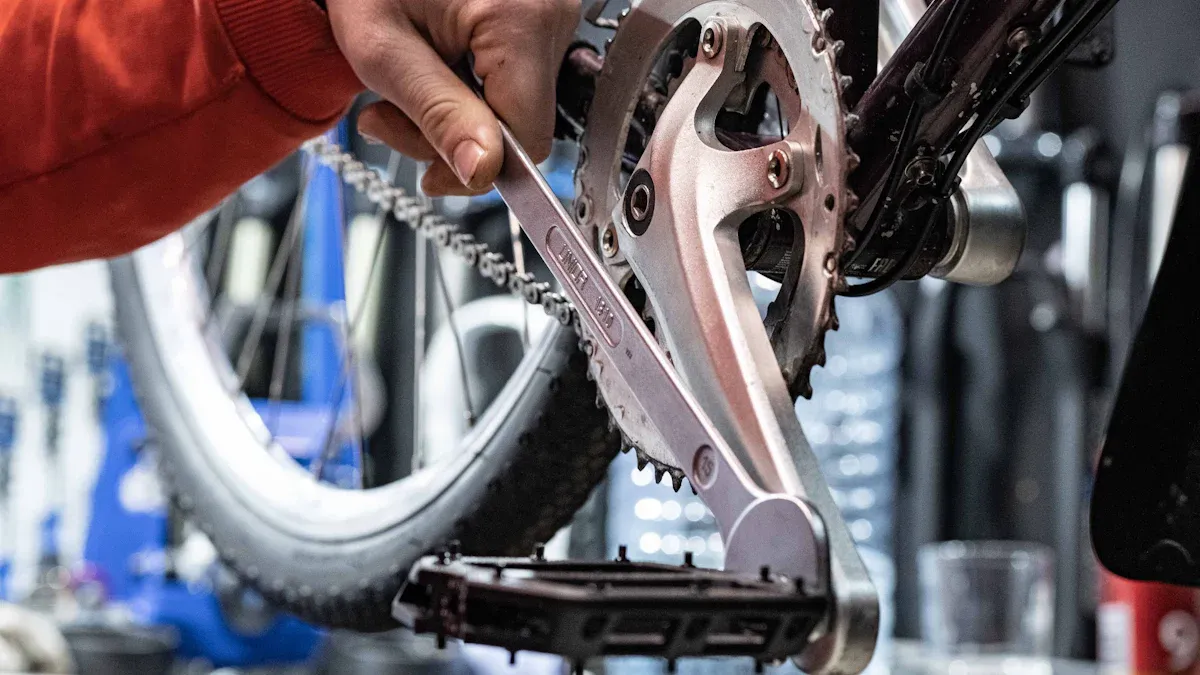
Inspection
Checking excavator final drive parts often helps stop breakdowns. Operators should look for leaks, worn seals, and odd noises every day before work. Cleaning dirt from the final drive with a hose or washer keeps seals and bearings safe. Keeping the right track tension lowers stress on final drive parts. Operators should change track tension for different ground and check it after using the excavator for 30 minutes.
A simple checklist for inspection is:
Check oil level and quality by parking on flat ground and letting the engine cool.
Look for leaks, rust, or wear near seals, gears, and the hydraulic motor.
Listen for grinding or squealing sounds while working.
Clean dirt from the final drive and undercarriage after each use.
Watch for changes in speed or steering.
Makers suggest these times for maintenance:
Maintenance Task | Recommended Interval(s) |
|---|---|
Daily inspection for leaks | Daily before work |
Gear oil level monitoring | Every 100 service hours or monthly |
Gear oil change | Once a year or more if used a lot |
Hydraulic fluid change | Every 4,000 hours or as told in the manual |
Filter replacement | As the operator’s manual says |
Tip: Plan for a pro to check the final drive every year. Keep notes of all checks to spot problems early.
Troubleshooting
Operators sometimes have problems like noise, shaking, overheating, leaks, or power loss. To fix these, try these steps:
Check and fill oil to keep things moving well.
Look at bearings and gears for wear; swap out bad parts.
Check hydraulic fluid for dirt or low levels.
Find leaks in the hydraulic system and fix them fast.
Look at sprockets and shafts for loose or broken spots.
Listen for weird sounds and stop the machine if you hear them.
Check filters for clogs and change them if needed.
Some common mistakes are not checking oil, ignoring leaks, and not changing gear oil often. Letting dirt get into the hydraulic motor or not checking the case drain filter can break parts. Operators should not make these mistakes. This helps final drive parts last longer and keeps the excavator working.
Doing regular checks and fixing problems fast keeps the final drive working well and saves money on repairs.
How Final Drive Components Work Together
Power Transmission
The final drive system helps the excavator move. It changes hydraulic energy into movement. First, hydraulic fluid goes from the pump to the hydraulic motor. The motor uses this fluid to make spinning force. The planetary gear set gets this force next. These gears slow down the speed and make the force stronger. The gearbox holds the gears and sends the strong force to the output shaft. The shaft turns the sprocket. The sprocket moves the tracks. This lets the excavator carry heavy things with power and control.
The hydraulic motor turns fluid pressure into spinning energy.
The planetary gear set slows speed and makes torque stronger with its gears.
The gearbox holds the gears and sends power to the tracks.
The output shaft and sprocket spin the tracks so the excavator can move.
This setup helps the excavator work on rough ground. It gives the machine the power it needs for digging and lifting.
Coordination
All parts of the final drive must work together. The hydraulic motor, planetary gear set, and gearbox are the main parts. When these parts work well, the excavator moves smoothly and with control. If one part breaks or is not lined up, the whole system has problems. You might hear grinding, see leaks, or notice weak track movement. Operators should stop the machine if they hear strange sounds. Checking for broken or out-of-place parts helps stop bigger problems.
A working final drive needs regular checks and quick fixes. Operators should look at oil levels, seals, and gear alignment often. Fixing leaks and worn parts keeps the excavator running and saves money. When all parts work together, the excavator does its job well and lasts a long time.
Tip: Check the final drive every day and fix problems fast. This keeps the excavator strong and ready for work.
Knowing how to take care of excavator final drive parts is important. It helps the machine work well and not break down. Operators who check and fix parts often can stop problems before they get worse. This means the excavator does not stop working for long and lasts longer.
Checking the parts, changing gear oil, and cleaning under the machine help stop damage and wear.
Using good oil and strong parts makes sure the final drive works its best.
Taking care of these parts helps the excavator move without trouble, saves money, and keeps everyone safe.
FAQ
What signs show a final drive needs repair?
Operators might hear grinding noises or see oil leaking. The final drive may get too hot or move in a jerky way. These things mean some parts are worn out or seals are broken. Checking early can stop bigger problems from happening.
How often should operators check final drive oil?
Operators should check the oil every 100 hours or once a month. Doing this often keeps gears and bearings safe. If oil is low, it can hurt the final drive and make it not last as long.
Tip: Wait for the engine to cool before checking oil.
Can operators replace final drive seals themselves?
Operators with some mechanical skills can change seals. They must use the right tools and follow the maker’s steps. If they are not sure, they should ask a pro for help.
What causes final drive overheating?
Here is a table with common causes:
Cause | Effect on Final Drive |
|---|---|
Low oil level | Makes more friction |
Dirty fluid | Hurts the bearings |
Worn gears | Makes extra heat |
Operators can fix overheating by checking oil, cleaning the fluid, and changing bad parts.
